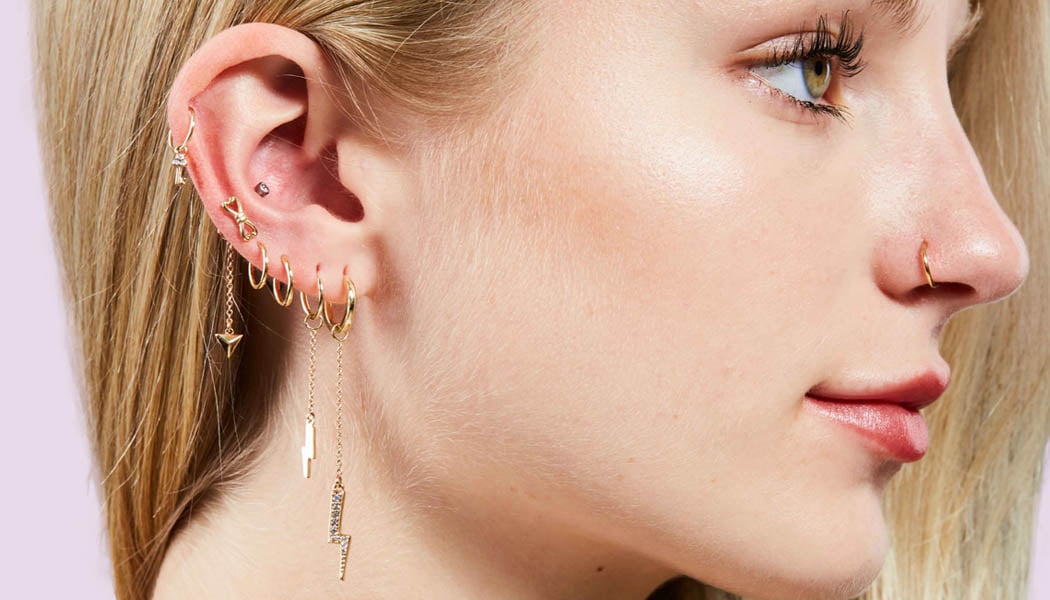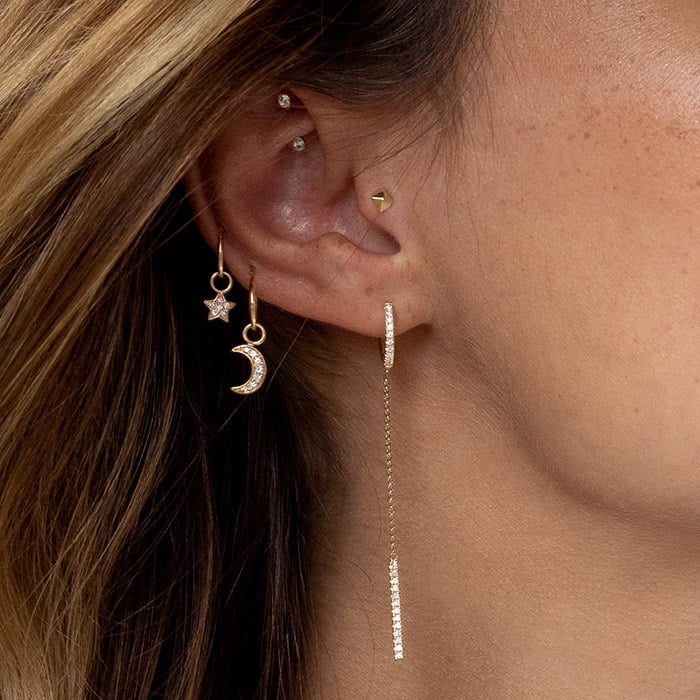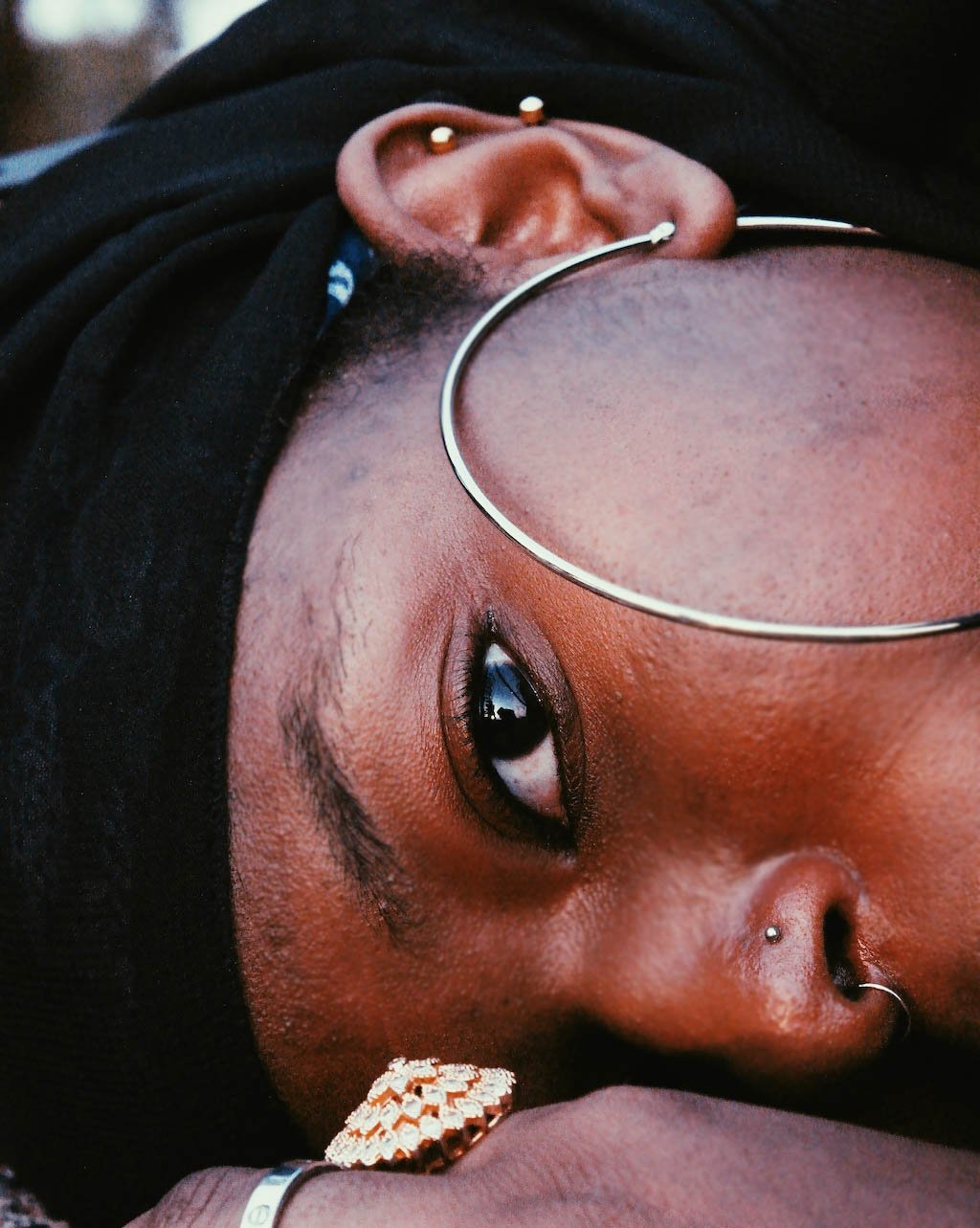
Lobe and cartilage piercings are among the most common piercing types out there. The folds of the ear present a varied canvas for tons of unique piercing choices, and ear piercings likely won’t affect your work; they’re considered more acceptable by even the most conservative groups.
However, just because ear piercings are popular doesn’t mean that they’re easy to heal. While lobe piercings are probably among the safest piercings—the short healing time and forgiving nature of the lobe make them hard to mess up—cartilage piercings don’t boast the same ease. In fact, cartilage piercings are among the most difficult piercings to heal. Many who get their cartilage pierced say that they are the most uncomfortable piercings to get, and cartilage is incredibly difficult to heal, leading to long healing times and increased chances of complications.
If you’re keen on getting a stunning new daith or rook piercing, you need to do your research and make yourself aware of the healing process and the things you need to do in order to ensure a safe healing period. That’s why we’ve put together this guide on key things that you need to know to ensure perfect healing for your ear piercing. These tips are mostly intended to cover cartilage piercings, but they will be important to keep in mind for lobe piercings as well.
The success of your piercing begins before you’ve even made an appointment. Finding a reputable piercer is key to any piercing, but it’s imperative when you’re getting a cartilage piercing.
Back in the day, we used to go to the mall to get our lobes pierced with a piercing gun. This led many of us to believe that getting pierced was pretty easy—just point and shoot. The truth is that there are so many factors in play when you get pierced. Your piercer needs to know whether you have the adequate anatomy for your piercing, the correct angle at which you should be pierced, the depth at which you should be pierced, and a ton of other things. Reputable piercers go through a long training process, including an apprenticeship, that teaches them everything that they need to know. Not everyone can pick up a piercing needle and call themselves a piercer.
If you choose a non-reputable piercer, you could be dooming your piercing before you’ve even been pierced. Do your research, shop around, and find a piercer who has all of the expertise to properly conduct your piercing. Here’s a handy guide to help you find a reputable piercer.
Low-quality metals can cause irritation in new piercings, even if you’ve never experienced a sensitivity to metal before. Even stainless steel can cause some issues, even though it’s a fairly common metal for piercings.

For initial jewelry, you’ll probably go for implant-grade titanium (which a reputable piercer will have on hand). This is ideal for starter jewelry because it’s inexpensive, and it has very few alloys, minimizing your risk of reaction. Your initial jewelry piece will need to be larger in order to accommodate swelling. Once swelling has gone down, you can switch to a smaller, better-quality jewelry piece from materials like 14k gold. As you’re healing, you will need to have a piercer make this jewelry change.
Once you’ve been pierced by a reputable piercer, you need to find high-quality aftercare products. Luckily, this is easy. You shouldn’t put any product besides good ol’ saline solution on your piercing. Anything besides salt and water can irritate the piercing causing dry skin, piercing bumps, and other unsightly complications.
While you can mix your own saline solution at home, we recommend investing in a piercing aftercare saline solution for a few reasons.
When looking for a piercing aftercare saline spray, check the ingredients carefully. It should not contain anything besides salt and water. Some piercing aftercare sprays include essential oils. Stay away from these; essential oils are quite harsh and can be harmful to a healing piercing. On a similar note, do not use tea tree oil on your healing piercing. Although tea tree oil does have antiseptic properties, it also dries out your piercing. Avoid any advice telling you to use tea tree oil as a cleanser or as a way to reduce piercing bumps.
If you’ve chosen a reputable piercer, they will recommend a good piercing aftercare saline solution that you can trust.
You should not twist, touch, or even sleep on your piercing as it heals. Especially in the first days of healing, you might be tempted to touch the new jewelry in your ear. This is a quick way to damage the fragile cartilage.
If crusties begin to form around the jewelry, which is likely in the first few weeks of healing, you can gently wash them away with warm water, then use the cool setting on your hairdryer to dry the piercing. This way, you can keep your piercing clean without touching it.

Make sure that you don’t lie on it while you’re sleeping. If you’ve had both ears pierced at the same time, this means lying on your back to sleep. Since cartilage piercings can take up to 9 months to heal, and even longer, we recommend getting pierced one ear at a time so that you’re not stuck on your back for that long.
If you do need to adjust the jewelry, do so carefully, and make sure your hands are fully cleaned beforehand. Don’t adjust your jewelry often; it’s better to have crooked jewelry than a piercing bump.
A quick Google search will give you tons of advice about how to diagnose and heal your piercing bumps. Unfortunately, so much of this information is incorrect, and much of the advice out there will actually make things worse.
The thing about piercing bumps is that they need an expert to diagnose. Nine times out of ten, a piercing bump will go away on its own if you simply adhere to your cleaning schedule. They can be a natural part of healing, especially in the cartilage. But, they can also be an indication of a larger issue, and only a professional can tell you which is which. If you have a piercing bump, don’t turn to the internet. Turn to your piercer.
Cartilage piercings take around 6 – 9 months to heal, but this time depends upon your body’s ability to heal and your aftercare practices. It could take longer to fully heal. Additionally, piercings appear healed on the outside before they are fully healed on the inside. Only a piercer can confirm that your piercing has fully healed.
Too often, people hit that 6-month mark and immediately stop aftercare practices and change their jewelry on their own. They then inadvertently damage the still-healing piercing, causing complications like piercing bumps, which, in best-case scenarios, lengthens their healing times, and in worst-case scenarios, ruins their piercings.
Play it safe and talk to your piercer before stopping aftercare practices.
The hardest part about getting a cartilage piercing is waiting for it to heal. While you wait, here are some cartilage jewelry styles that we love.
One Reply to “Ear Piercing Care: Ways to Ensure Perfect Healing”
Healthiermn, 28 Dec 2021
thanks for the piercing ideas.